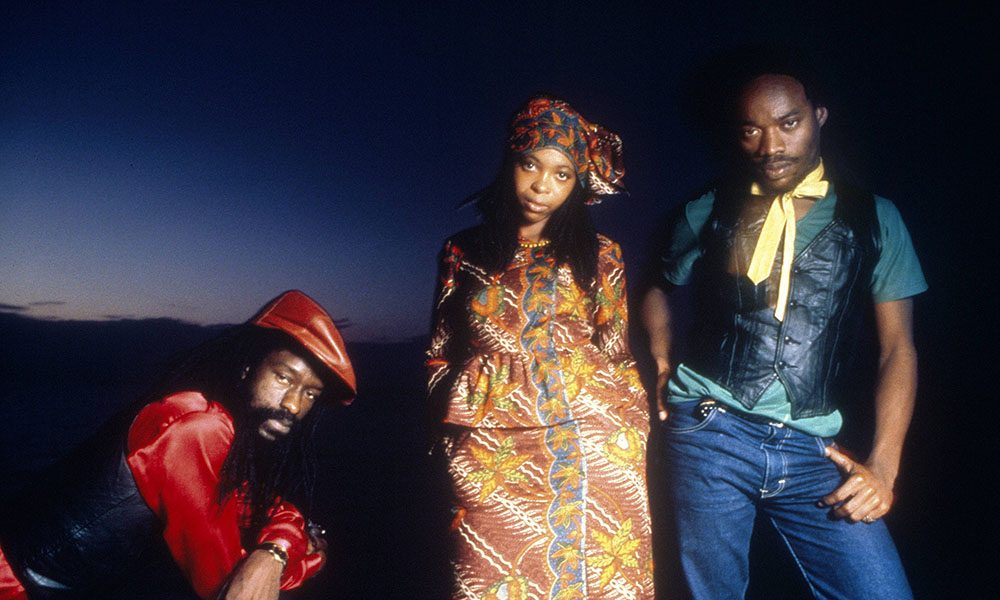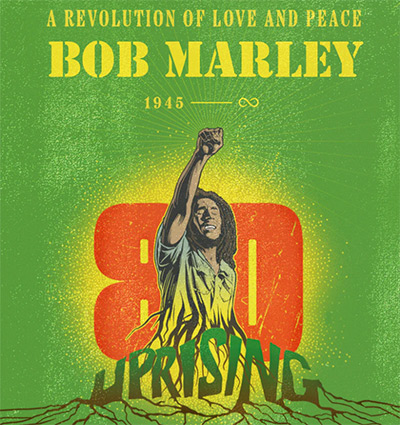Black Uhuru
As the first reggae artist to win a Grammy Award, Black Uhuru have been called the best of the second generation of artists from Jamaica.

As the first reggae artist to win a Grammy Award, Black Uhuru have been called the best of the second generation of artists from Jamaica. They originally formed in the Waterhouse district of Kingston, Jamaica in 1977 and released their first record later that year. Uhuru means ‘freedom’ in Swahili.
Black Uhuru’s breakthrough came in 1980 with the brilliant Sinsemilla, which features Sly Dunbar and Robbie Shakespeare as the rhythm section and the album’s producers. In 1981 Black Uhuru released Red, for many their best album, and the following year, Chill Out – both albums again produced by Sly & Robbie.
It was Anthem, released in 1984 that won the band the first Reggae Grammy and it’s not difficult to hear why as it features the vocals of Michael Rose and Sandra ‘Puma’ Jones, whose skills are given prominence by Sly and Robbie’s slick production. The opening track from Anthem, ‘What is Life’, got a lot of attention and charted in Britain. Their album Brutal from 1986 includes the single ‘The Great Train Robbery’, which also appears on the soundtrack of the Grand Theft Auto: San Andreas video game. In 1989 the band opened for the Rolling Stones; Keith Richards had recorded with an earlier incarnation of the group prior to signing for Island Records.
Black Uhuru maintained their high quality despite numerous personnel changes in their 40-plus-year history. They were, according to Reggae: The Rough Guide, “The most dynamic and progressive reggae act of the 1970s and early ’80s.”
Formed by Ervin “Don Carlos” Spencer, Rudolph “Garth” Dennis, and Derrick “Duckie” Simpson. When the group experienced difficulties securing a record contract, Spencer left to pursue a solo career and Dennis joined the Wailing Souls. Simpson, who remained the thread throughout Black Uhuru’s evolution, reorganized the band with Errol “Jay” Wilson and quivery-voiced lead vocalist Michael Rose, compared by Trouser Press to “a Rasta cantor.” Accompanied by the rhythm section of Sly Dunbar on drums and Robbie Shakespeare on bass, Black Uhuru created a sound that made them a match for any reggae ensemble. Their debut album, Love Crisis, released in 1977, included the anthemic hit ‘I Love King Selassie’. Three years later, the album was remixed and released as Black Sounds of Freedom.
With the addition of harmony singer Sandra “Puma” Jones, an American woman who held a master’s degree from Columbia University and was a former member of the all-female group Mama Africa in 1981, Black Uhuru entered their most commercially successful period. In addition to recording a memorable studio album, Red, and an exciting live album, Tear It Up, the group reached its peak with the release of Anthem in 1983. Remixed and revised for release in the United States, the redone version was re-released in Europe shortly afterwards. Despite winning a Grammy, internal problems caused the band to splinter the following year. Rose was replaced by sound-alike Junior Reid. Jones and Reid remained with the band until 1989. Although Reid left when visa problems prevented him from touring, Jones, who was replaced by Olefunke, was forced to step down after being diagnosed with cancer. She died on January 28, 1990, and was buried in her home state of South Carolina.
The original three members — Simpson, Spencer and Dennis — reunited to record a trio album, Now, in 1990, they continue to tour and perform.












